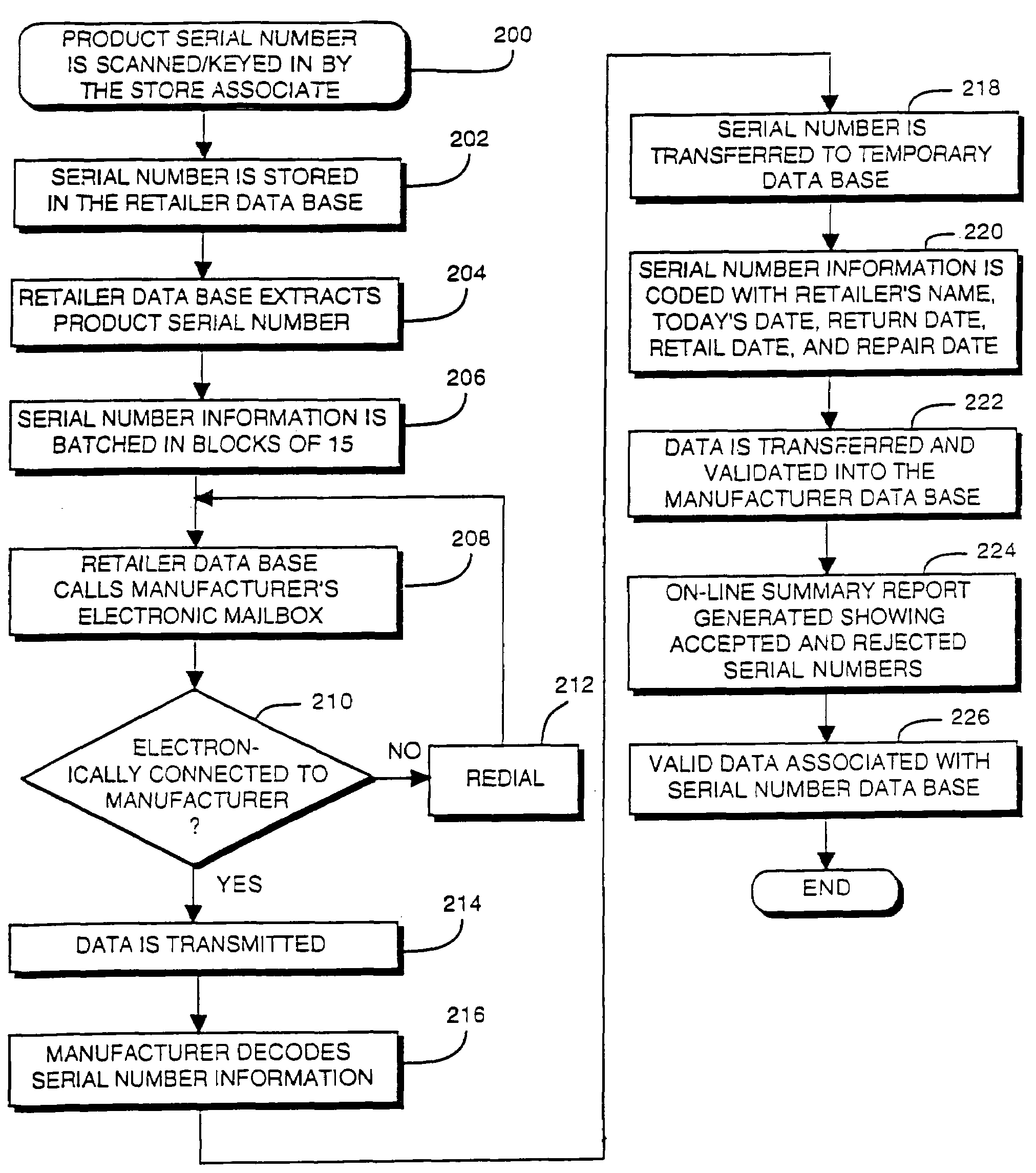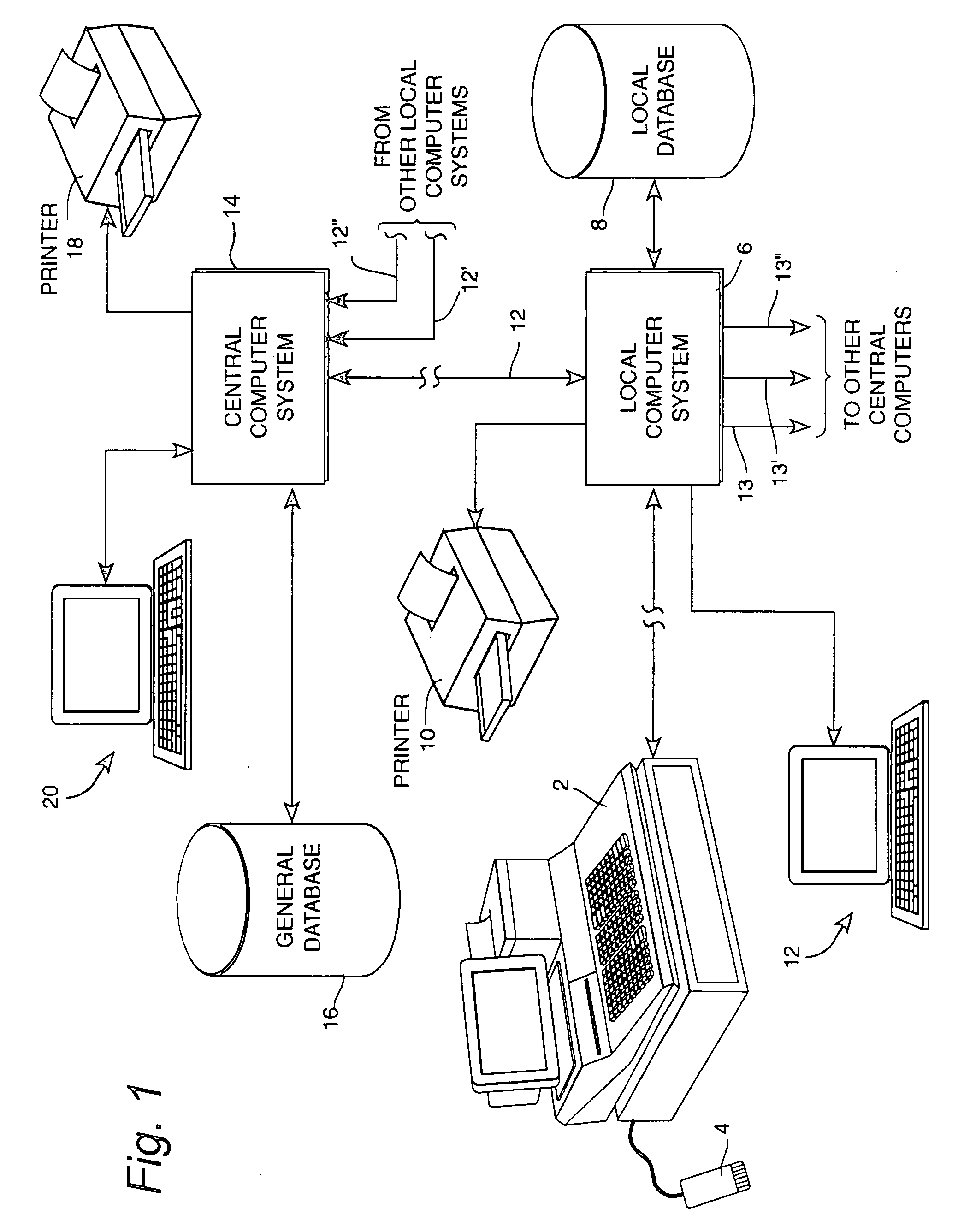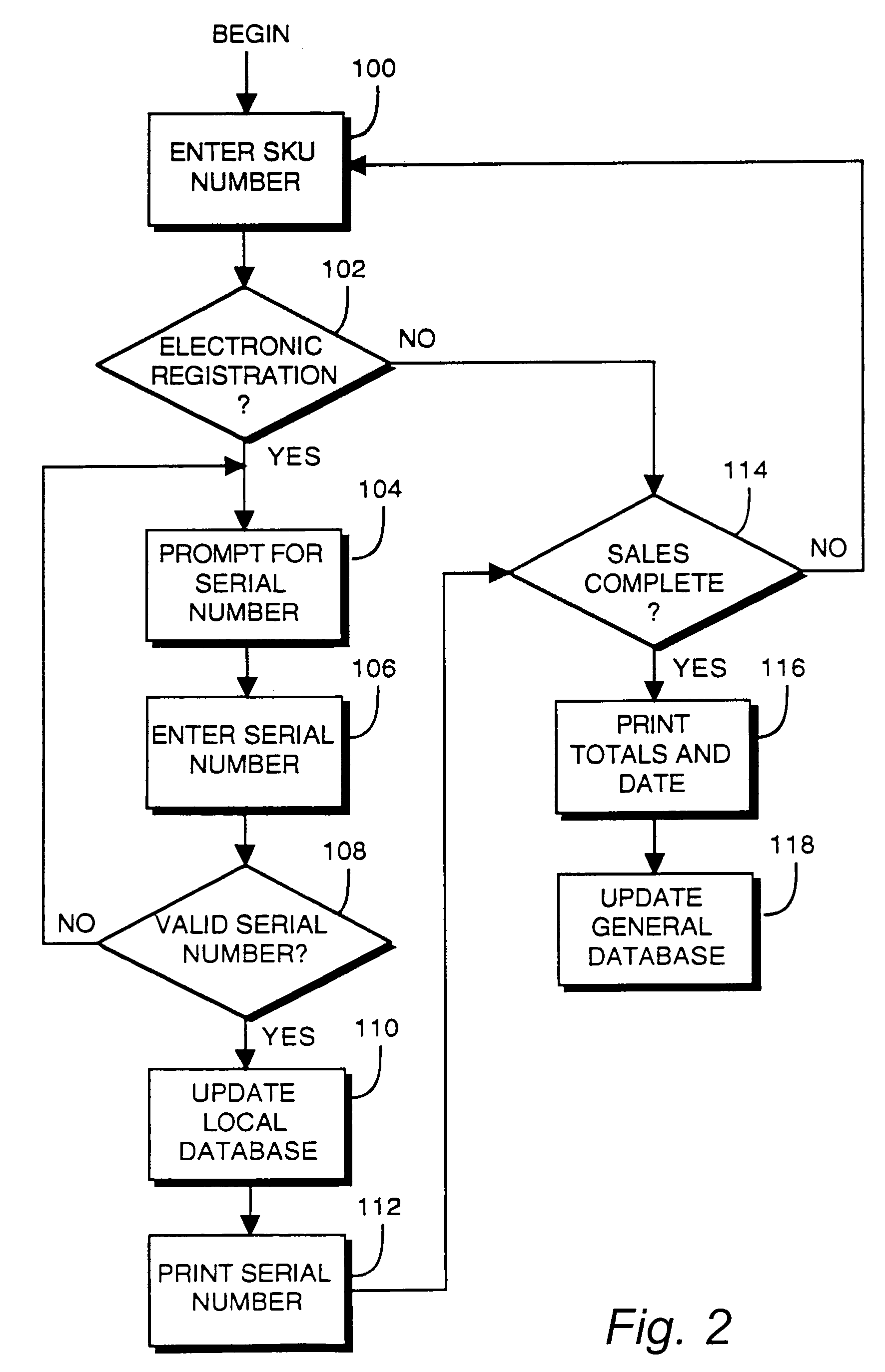Method and apparatus for fraud reduction and product recovery
a fraud reduction and product technology, applied in the field of fraud prevention and recovery, can solve the problems of multi-billion-dollar problem affecting not only retailers and corporations, but also everyday consumers, and merchandise is also sold
- Summary
- Abstract
- Description
- Claims
- Application Information
AI Technical Summary
Benefits of technology
Problems solved by technology
Method used
Image
Examples
Embodiment Construction
[0040]It will be recognized by those of ordinary skill that modification, extensions and changes to the disclosed exemplary implementations may be made without departing from the scope and spirit of the invention. In short, the present invention is not limited to the particular forms disclosed herein.
[0041]An example of an electronic registration system is illustrated in FIG. 1. Briefly, the example system may include a point of sale register 2 and an associated bar code scanner 4. The register 2 may be connected with a local computer system 6 in a suitable manner. For example, the register 2 may be “hard-wired” to the local computer system 6. Alternatively, the register 2 and the local computer system 6 may communicate, for example, through modems and telephone lines, or over radio communication channels. Any appropriate communication channel may be used.
[0042]In certain situations (e.g., single store retailers), the local computer system 6 may be located in proximity to the regist...
PUM
 Login to View More
Login to View More Abstract
Description
Claims
Application Information
 Login to View More
Login to View More - R&D
- Intellectual Property
- Life Sciences
- Materials
- Tech Scout
- Unparalleled Data Quality
- Higher Quality Content
- 60% Fewer Hallucinations
Browse by: Latest US Patents, China's latest patents, Technical Efficacy Thesaurus, Application Domain, Technology Topic, Popular Technical Reports.
© 2025 PatSnap. All rights reserved.Legal|Privacy policy|Modern Slavery Act Transparency Statement|Sitemap|About US| Contact US: help@patsnap.com



